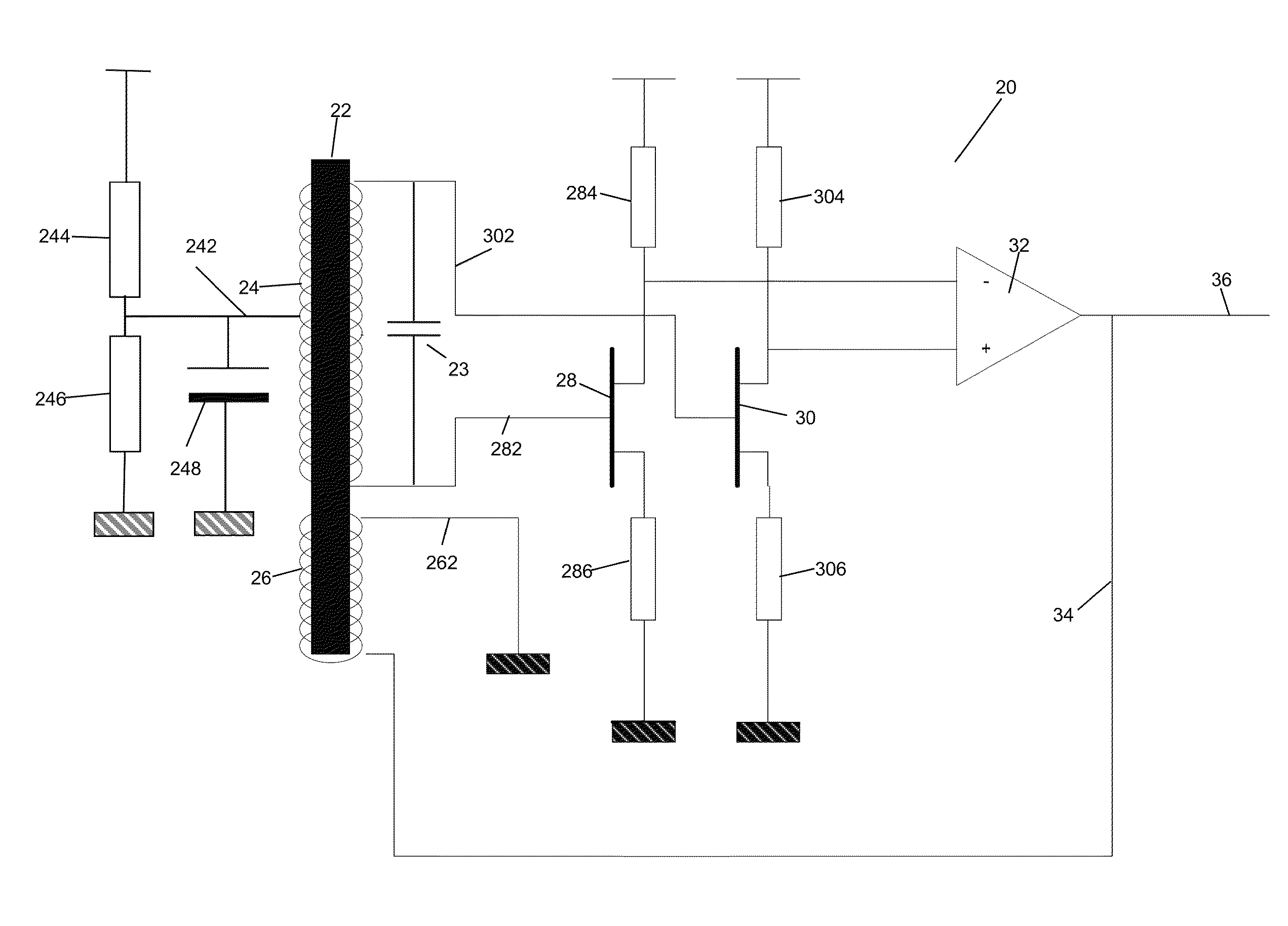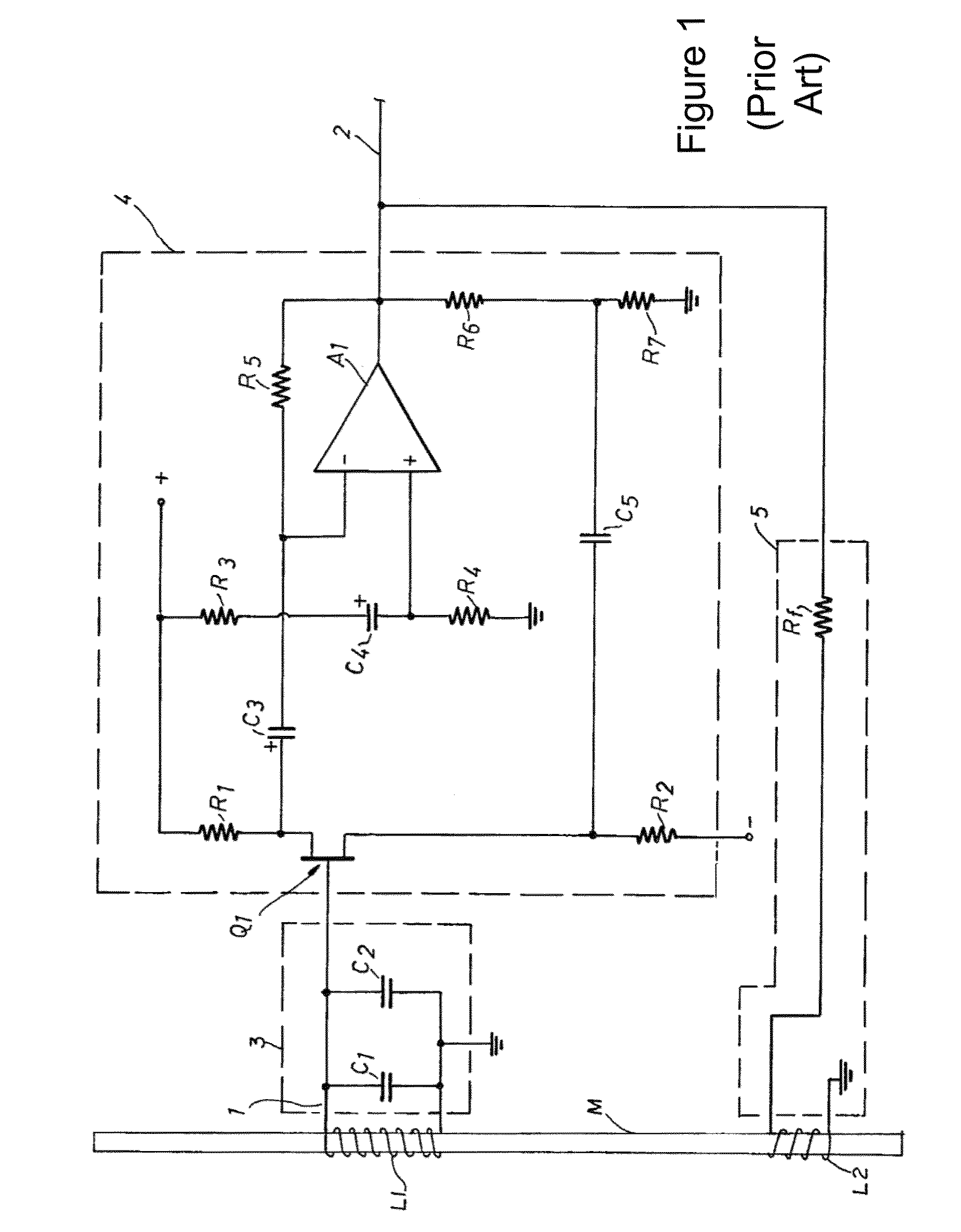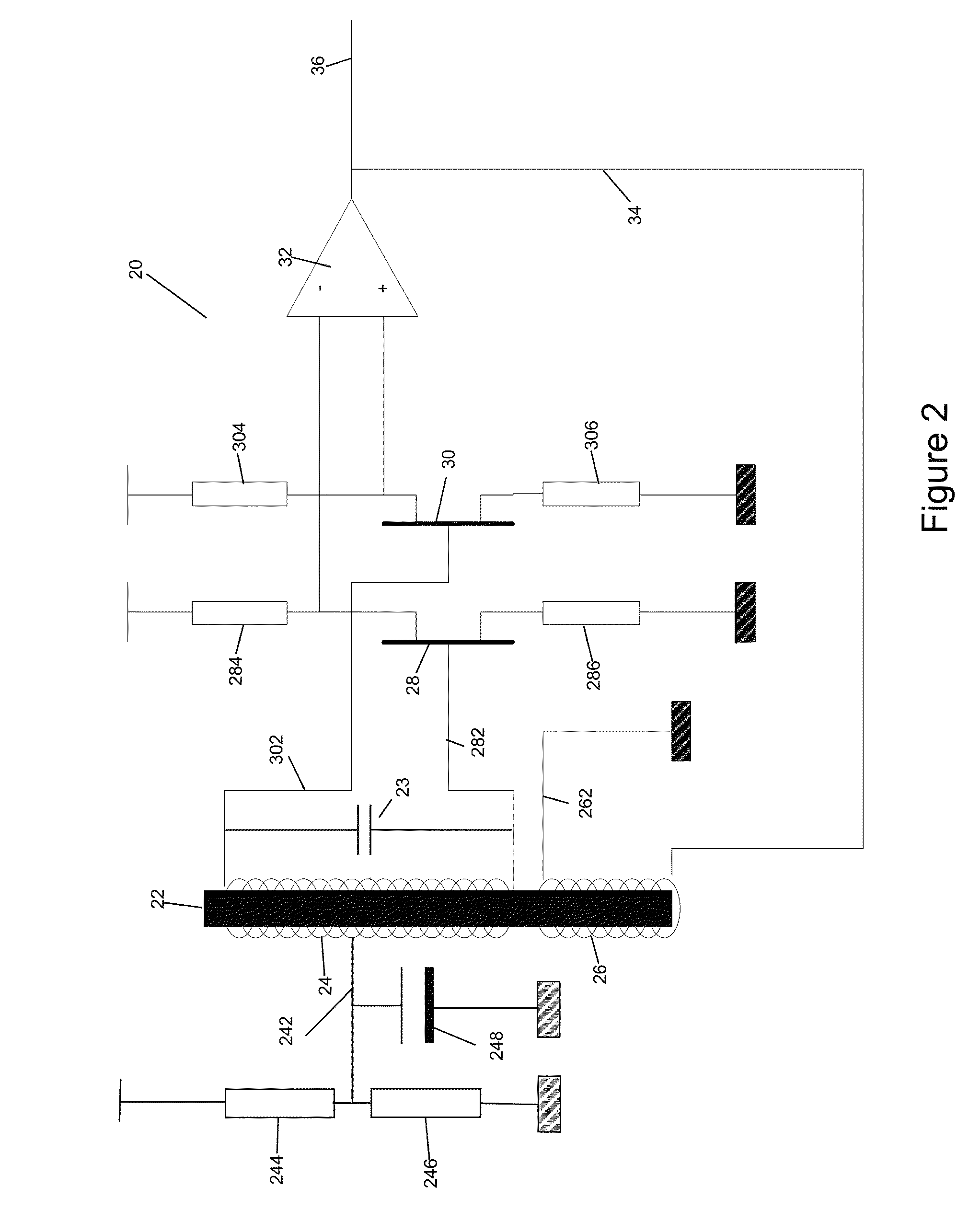Reduced Q low frequency antenna
a low-frequency antenna and q-reduction technology, applied in the field of rod antennas, can solve the problems of reducing circuits may not be suitable for receiving such a wideband signal, and the reception of wideband signals is not acceptable, so as to reduce the sensitivity of the antenna, reduce the q of the antenna, and reduce the electric field susceptibility
- Summary
- Abstract
- Description
- Claims
- Application Information
AI Technical Summary
Benefits of technology
Problems solved by technology
Method used
Image
Examples
Embodiment Construction
[0037]A first embodiment of the present invention is shown in FIG. 2. Here, a rod antenna circuit 20 is provided, comprising a former 22, such as a ferrite rod or the like, around which a first, main, antenna coil 24 is wound. In this embodiment the coil 24 has a centre tap 242 which is connected to an AC ground via AC grounding capacitor 248. The centre tap is DC biased via a divider formed from resistors 244 and 246. Outputs of the coil 24 are taken from opposite ends of the coil, with a first output line 302 feeding into the base (or gate) of a first transistor 30. A second output line 282 at the opposite end of the coil feeds a signal to the base (or gate) of a second transistor 28, via line 282. The first transistor 30 is provided with biasing resistors 304 and 306 respectively connected to the collector (drain) and emitter (source) of the transistor. Similarly, the second transistor 28 is also provided with biasing resistors 284 and 286, respectively connected to the collector...
PUM
 Login to View More
Login to View More Abstract
Description
Claims
Application Information
 Login to View More
Login to View More - R&D
- Intellectual Property
- Life Sciences
- Materials
- Tech Scout
- Unparalleled Data Quality
- Higher Quality Content
- 60% Fewer Hallucinations
Browse by: Latest US Patents, China's latest patents, Technical Efficacy Thesaurus, Application Domain, Technology Topic, Popular Technical Reports.
© 2025 PatSnap. All rights reserved.Legal|Privacy policy|Modern Slavery Act Transparency Statement|Sitemap|About US| Contact US: help@patsnap.com



